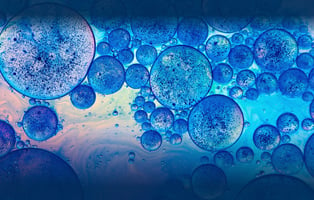Clariom™ assays from Applied Biosystems™ use microarray technology to facilitate broad or targeted transcriptome analysis to identify crucial biomarkers, biological pathways, and complex gene expression signatures suited to diverse user needs.
The Clariom™ D assay enables a comprehensive and detailed analysis of over 500,000 coding and non-coding genes, exons, and splice variants, whereas the Clariom™ S assay allows a more focused expression analysis limited to around 20,000 well-annotated genes (Thermo Fisher Scientific, 2023).
For large-scale gene expression profiling in drug screening settings, the Clariom™ GO Screen service increases sample throughput with the additional advantage that it achieves reliable results even with direct cell lysates.
In this article, we discuss the workflow behind the Clariom™ assays. After getting to grips with the technology, look at how the Clariom™ GO Screen compares to MERCURIUS™ DRUG-seq in our accompanying article.
Clariom™ Assays: Microarray technology for gene expression profiling
The backbone of all of the Clariom™ assays is gene expression microarray technology, where millions of oligonucleotide probes are synthesized in situ at defined locations on quartz glass using photolithography. Multiple independent probes correspond to any given target RNA (Thermo Fisher Scientific, 2017).
In Clariom™ assays, these probe sequences are taken from the latest curated public sequence databases such as RefSeq, Ensembl, NONCODE, and others to ensure robust transcripts are detected for accurate discoveries or novel biomarker detection.
Microarray technology is relatively scalable with Clariom™ D and S assays having typical study sizes of between 12 and 1,000 samples. The Clariom™ GO screen is suitable for up to 500,000 samples.
The Clariom™ Assay workflow
- RNA isolation
Firstly, RNA is isolated from samples using any standard method. Total RNA samples should be of high integrity, free of genomic DNA and any contaminating proteins, phenol, ethanol, and salts introduced in the RNA extraction process. For standard Clariom™ assays, a minimum of 50 ng to a maximum of 500 ng RNA is required.
For low-quantity RNA samples, Clariom™ Pico assays give reliable results for as little as 0.1 ng of RNA or from as few as 10 cells. This is a key benefit for RNA isolated from formalin-fixed paraffin-embedded (FFPE) samples because the process of formalin fixation chemically modifies and partially degrades RNA making it of poorer quality and quantity than fresh samples. A minimum of 0.5 ng is required for FFPE-derived RNA.
- RNA target preparation
It generates biotinylated sense-strand DNA targets from total RNA without needing mRNA enrichment or rRNA removal stages. Furthermore, the kit uses a reverse-transcription priming method to prime the entire length of RNA and ensure that both poly(A) and non-poly(A) RNAs are included to provide complete, unbiased transcriptome coverage.
-
Hybridization and scanning
Fluorescent intensity upon hybridization is measured by solid-state lasers incorporated in the GeneChip™ Scanner 3000 7G from Applied Biosystems™ or similar microarray scanners.
The amount of fluorescent signal detected by the scanner indicates the level of hybridization to a particular probe which is proportional to the number of complementary nucleic acid fragments in the sample.
- Data analysis
Finally, fast, intuitive whole-transcriptome data analysis can be performed with the freely available TAC 4.0 software to normalize signal intensities of probes and generate accurate, significant insights into the abundance of coding RNAs, non-coding RNAs, and splice isoforms depending on the Clariom™ assay used.
Overall, Clariom™ assays provide potential users with multiple scalable microarray-based options for superficial or deep analyses of the coding and non-coding transcriptome to accelerate biological insight.
Our follow-up article discusses how these assays have been used in large-scale studies to advance our understanding of human health and disease. We also compare the Clariom™ GO screen to MERCURIUS™ DRUG-seq to examine how novel 3’ bulk mRNA-seq methods are increasingly attractive compared to microarrays for scalability, cost, and data quantity in large-scale studies.
Please contact us here to learn more about novel, ultra-scalable transcriptome profiling technologies.
References
1. Gene expression microarrays assay brochure | Thermo Fisher Scientific (2017). Available at: http://assets.thermofisher.com/TFS-Assets/LSG/brochures/gene-expression-microarrays-assays-brochure.pdf.
2. GeneChip™ WT PLUS Reagent Kit | Thermo Fisher Scientific (2020). Available at: https://www.thermofisher.com/document-connect/document-connect.html?url=https://assets.thermofisher.com/TFS-Assets%2FLSG%2Fmanuals%2FMAN0018137_703174_WTPlus_Reagentkit_Assay_UG.pdf.
3. Clariom™ Assays | Thermo Fisher Scientific (2023). Available at: https://www.thermofisher.com/uk/en/home/life-science/microarray-analysis/transcriptome-profiling-microarrays/clariom-assays.html.




